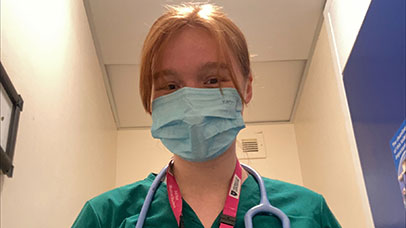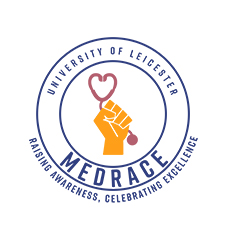College of Life Sciences
Active bystander training
 Anna Brown, Student, Leicester Medical School
Anna Brown, Student, Leicester Medical School
What is an active bystander?
Active bystander training is now something that we deliver to every year group at the start of the year. A bystander is just anyone who witnesses an event but what you do next determines whether you become an active or passive bystander. Active bystanders in this context notice something is wrong and name it e.g. racism, sexism, ableism. Then they do something about it. Obviously each situation is unique and so there are many active responses, for example challenging the person at the time, asking questions or reporting are just a few. The training we do explores what responses there are and how you may implement them.
How I got involved
I had been looking for a way to get involved with diversifying the teaching since the dermatology teaching in 2nd yr where I was shocked by the lack of representation of darker skin tones. So when I heard about MedRACE I jumped at the opportunity. Before I got involved in co-delivering this teaching I sat the other side receiving it. I had often thought about how I might challenge a senior colleague if they said something that I knew wasn't right but I didn't really feel I had the vocabulary or confidence to do so. The teaching was a great chance to open up discussion with my peers. As I had learnt so much from the teaching I’d received, once I joined MedRACE I was keen to get involved. I co-delivered the teaching to small groups of Phase 1 students with lots of room for discussion throughout about the pros and cons of each approach and the possible outcomes in various scenarios. We used real situations from students which for me acted as a wake up call to the fact these are these comments are not from history books but from today!
Why is it important ?
I think this teaching is so important for clinical years. Most have a general understanding of what things are and aren't acceptable and have been in situations where something has been said that has made them uncomfortable. However, the next step can be a little harder. It is knowing what to say, when to say it and how to do so without inflaming the situation. It is learning to interject in a way that is helpful rather than harmful, that lets the person being attacked know that you saw and you stand with them, and the aggressor know that what they said was not acceptable whilst giving them space to learn.
Even though the NHS has such a fantastic mix of people from different backgrounds and ethnicities across the board, racism and discrimination of all forms is still rampant. We want to equip medical students walking into these environments for the first time to, as Gandhi famously said: “be the change you want to see in the world.” We want them to have the skills to recognise, act and educate where they are.
How you can get involved
One of the best ways to get involved with the equality, diversity and inclusion aspects of the curriculum across the uni is through joining MedRACE. We are a society based in the medical school focused on changing policy and teaching throughout medical education so that we can be doctors who can stand up to injustice both for patients, colleagues and ourselves. You don't have to have loads of experience in teaching or know about all the nuances of discrimination; I certainty didn’t and I still have so much to discover. I have learnt so much through delivering the teaching, never mind receiving it. We are all medical students so we understand that timetables are tight and you won’t always have the time to get as heavily involved especially around exam season. There will always be support around you from teaching staff and other MedRACE members so you can grow in confidence, knowledge and help enforce small changes.
18 April 2022
